On Sao Nicolao, the fifth largest island of Cape Verdes, there is a piece of land called Farinha de Pau. You will come from the West down the only road, with on the left hand the sea and on the right hand the savannah and desert land. When you see the volcanos before you, the road turns to the right and 3 minutes later you are there: Sergio and Simone’s Eco Rural Bed & Breakfast.
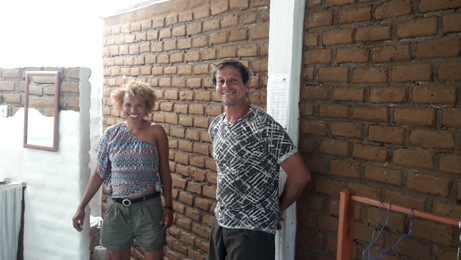
The big picture
Sergio and Simone started with just a rough piece of land. Since the 1950’s the islands here get less and less rain, so the water supply is crucial. Here they have a good start, because the water comes from the Faja project. Fresh rainwater is collected in the volcano, because of the vegetation they planted inside. The difference in temperatures makes the clouds over the volcano ‘empty’ the rain. It is a natural chain reaction, giving a permanent and reliable water supply. Sergio: “This gives sustainable future opportunities in this rural area; we just worked out a reforestation/revegetation plan and we are talking with investors now.”

The big picture of their small B&B is to stay sustainable. “When we started, the land was like a savannah. We planted 1,500 trees and made a wall around it to protect them from goats and animals. This is the base. Then we want to use only the local materials. Farinha de Pau offers us the sand and the tree branches to build with. And this island, Sao Nicolao, offers the rest. I will show you.”
Sun dried clay bricks
“We make a special mix from the clay leafs and sand that we found here. Then, we put them in moulds, and the Cape Verdean sun bakes the bricks for the walls. You like the colour?”
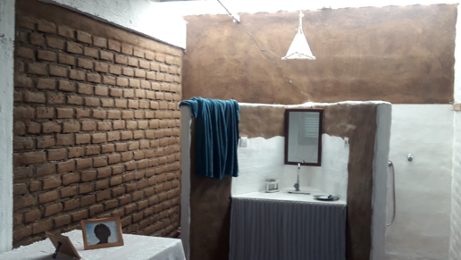
Indeed, I like this warm amber-sandstone colour of the long wall. But could it support the roof and more? Sergio answered: what you actually need for the construction, is just a small, well reinforced concrete profile. It is worked in the wall. This is a few percent of the total weight of the materials. And it is already strong enough to support a second storey.”
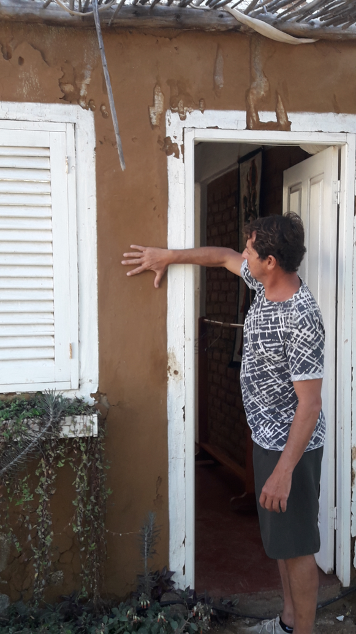
Sergio explains how the walls are plastered with a mixture of loam and sand.
Pallets and tires
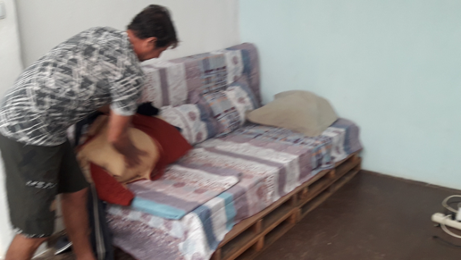
The car tire is perhaps one of the least valuated, building materials. Sergio: “When I go surfing on the lee side of the island, I sometimes smell burnt tires. It stinks and the emissions are so bad for the environment. So, I decided to take them away and started using them. ”
It proves to be a strong and durable building material.
You can use tires to reinforce unequal ground, so it stays on its place. A good alternative for concrete, because now the soil stays open to absorb water.
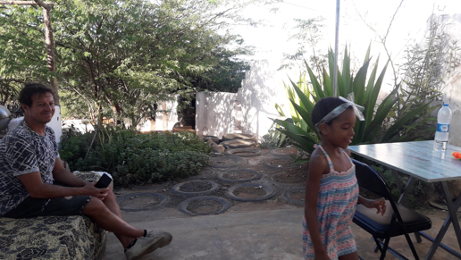

..and tires are good to make stairs from; you can never fall hard!
Sergio also made a serial septic tank from it. “It is simple: you dig a big hole, put up a pile of tires, and a next pile and a next one. You connect the piles and close the top of the piles. Then, connect the sewer to this septic tank; the water’s solids rot away and the water slowly leaks into the ambient ground, fertilizing the plants.
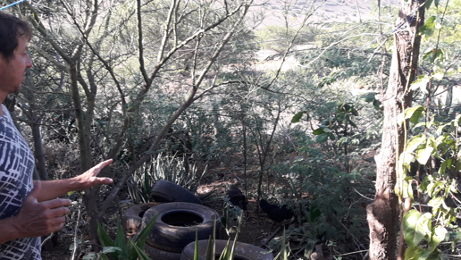
Vegetation
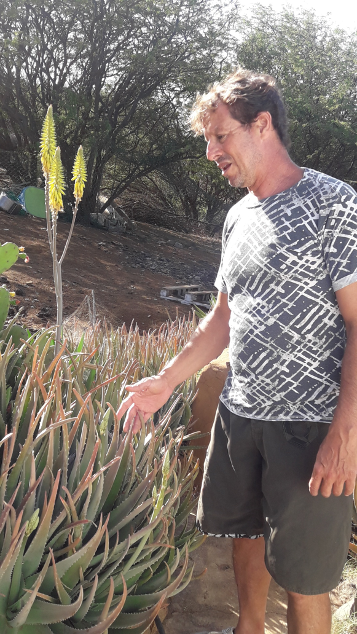
The more vegetation, the cooler the place. At the very start they planted 150 trees. Sergio just made pergola’s everywhere, and let plants like the passion fruit tangle its way on it. It is creating extra shadow and regulates the temperature of the place.
With a variety of crops and the composting, Sergio and Simone are closing the food loop of production and consumption. This is why Sergio calls this an eco-rural project.
Energy: the house
In every room Sergio uses the light of the sun. “We have solar just for the extra things, such as the freezer and the expresso machine In this climate the water temperature for the shower is never a problem.
We have no battery bank for the night or for cooking. So, then we use the main power line. That is a pity, because the electricity on Sao Nicolao runs on fossil fuels. But on the other hand, this way our energy supply is simple and cheap”. Sergio is also planning to construct a solar cooker.
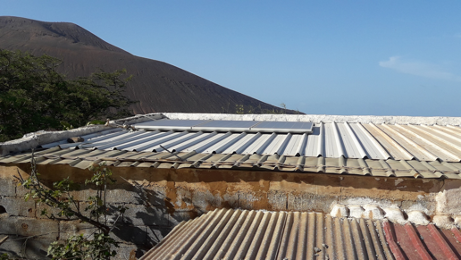
Energy: the body
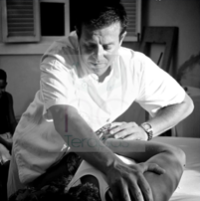
So, the B&B is a very sustainable place to be. Even more so, because Sergio can also re-energize your body. He graduated in Hatha Yoga, Shiatsu and Japanese Seitai (Chiropractic). In São Nicolau, he discovered a traditional treatment with volcanic sand for rheumatism that was almost forgotten. This combines perfectly with Shiatsu and Seitai. And it is perfect for sailors who suffer from pain and muscle fatigue due to the long journey and rough sea.
The surroundings
These pictures speak for themselves. This eco-rural B&B, next to the volcanos, has found the perfect location!

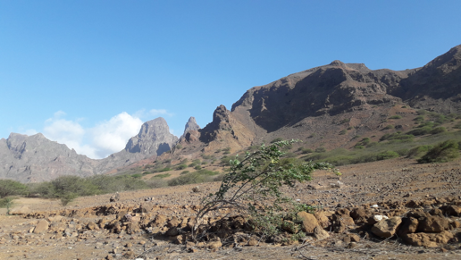
More info at: https://www.farinhadepau.com
Here is 'Ya' now
Here you subscribe to our sustainable newsletters
